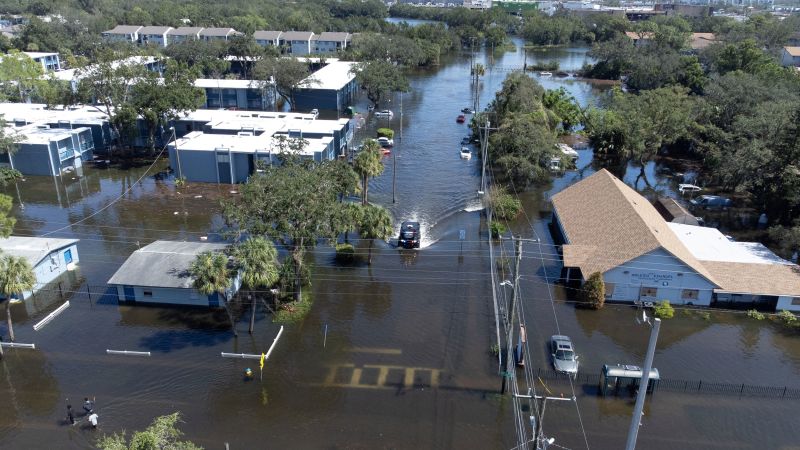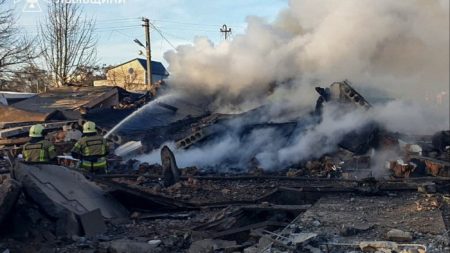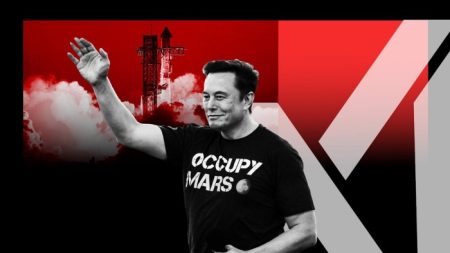You may have noticed something peculiar if you were doomscrolling as Hurricane Milton devastated Florida this week: social media creators who stuck out the storm in unsafe evacuation zones, seemingly for the sake of creating content.
- One Instagram influencer said she was staying in her beachfront Sarasota condo to help care for elderly neighbors but then used attention from her decision as an opportunity to promote her book. After the storm passed, she posted an Instagram Story saying, “I lived bi**h.”
- “This is probably the dumbest decision I’ve done yet,” one TikTok creator said in a video about not leaving a mandatory evacuation zone in Tampa. He later racked up hundreds of thousands of likes as he posted half a dozen videos documenting his experience waiting out the storm in his apartment.
- Another TikTok creator posted a video of herself and her child standing outside of their Sarasota home during the storm, saying, “this is a blast, y’all should be here. Why’s y’all evacuate?” And then: “There’s debris about to fly around, we’re about to go inside.”
- Two weeks earlier, a TikTok post of a Florida man kayaking in several feet of water inside his Tampa home during Hurricane Helene went viral. He then decided to stay put for Hurricane Milton, posting about his prep and decision to ride out the latest storm. One follower commented: “Can’t bring myself to like this … please be safe.”
Of course, people have always done crazy stuff on the internet. And some creators said they had additional reasons for not leaving, like concerns about gas shortages and traffic during evacuations.
But the trend was a reminder of how social media can make dangerous situations worse. In the run-up to Milton’s landfall, we saw creators publicly flout official safety guidance alongside false claims about government weather manipulation and aid for hurricane victims.
It felt uniquely dystopian to watch people put themselves in harm’s way — not to mention potentially endangering emergency first responders who might later have to help them — to post through a tragic, life-altering weather event fueled in part by climate change, for the views. At least 17 people have died because of the storm, more than 1,000 people had to be rescued by first responders and homes and businesses have been destroyed.
For all the potential for social media to be a place to share valuable safety information and resources — and for people to offer help to others, as we saw when popular creators shared Amazon wish lists for victims of Hurricane Helene — the internet still often brings out the worst in us.
“In some ways, it’s not surprising that we saw influencers and creators broadcasting the story given this kind of obligation to mine one’s life for content,” said Brooke Erin Duffy, associate professor in the department of communication at Cornell University.
The phenomenon is attributable in part to the platforms, whose algorithms often promote inflammatory content that generates user engagement and which often reward creators financially when such content goes viral.
“The role of the algorithms cannot be overstated given how much creators careers are shaped by their understandings of algorithms and other mechanisms of visibility,” Duffy said. “So many influencers and creators draw attention to the fact that these algorithms incentivize divisiveness” or so-called “rage baiting,” she said.
TikTok, for its part, labeled some creators’ hurricane videos with warnings against participating in dangerous behavior, and a spokesperson said videos that urged others not to evacuate or claimed that hurricanes don’t pose risks were made ineligible for promotion on the For You page. TikTok also directed users who watched or searched for Hurricane Milton content to information from the US Federal Emergency Management Agency.
Instagram did not respond to a request for comment.
Duffy added that creators may have also been following the longstanding model of news organizations, including CNN, that send reporters into extreme weather to cover storms, as Americans increasingly rely on social media rather than traditional news outlets for information.
But social media users (myself absolutely included) also incentivize this kind of creator behavior, by scrolling and watching. Many of the creators who shared content from the heart of the storm racked up thousands of likes and comments. In some cases, they earned monetary “gifts” through the platforms from followers who were entertained or worried or both.
“A positive of this is you’re getting real-time, on-the-ground footage of what’s happening,” Krysten Stein, assistant professor of communication at the University of Cincinnati Blue Ash College, told CNN. “On the other hand, it raises questions about the motivations behind posting such traumatic events. Are creators aiming to educate people about what’s going on, or is this being used as a way to monetize their content?”
Stein added: “It can feel a little bit icky when people are losing their lives and a catastrophic natural disaster is unfolding, while content is being created that may be monetized. However, we also need to recognize that influencers operate within a system where they rely on platforms to earn money … it is essential to acknowledge the larger system that pressures creators to make difficult decisions about how they engage with such tragic events.”
Read the full article here













